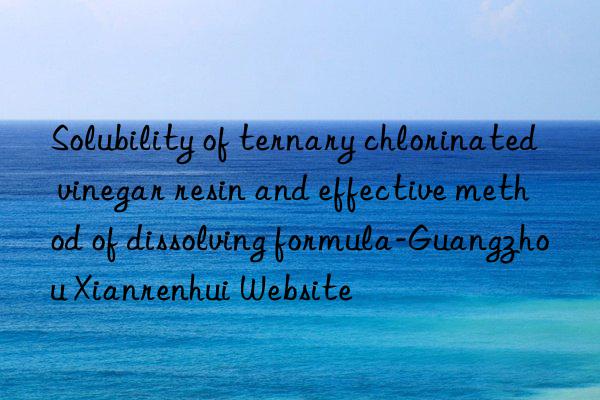
Ternary vinyl chloride resin is an important polymer material widely used in various fields. It is obtained by the reaction of ketone and formaldehyde under acidic conditions. During this process, formaldehyde is replaced by hydroxyl or carboxyl groups to form different types of terpolymer resins.
Hydroxy tri-vinyl chloride resin and carboxy tri-vinyl chloride resin are two common types. Among them, the hydroxy three-component vinyl chloride resin is a thermosetting resin with excellent heat resistance, corrosion resistance and chemical resistance. It is widely used in coatings, adhesives, composite materials and other fields. Carboxylic tribasic vinyl resin is a kind of thermoplastic resin, which has good processability and formability. It is widely used in plastics, rubber and other fields.
The solubility and solubility of tertiary vinyl chloride resin is one of the important parameters in its application field. In practical applications, according to different application requirements, different solvents and dissolution conditions can be selected to dissolve the terpolymer resin. Generally speaking, tertiary vinyl chloride resin has better solubility under acidic or alkaline conditions, but poorer solubility under neutral conditions.
In addition, tertiary vinyl acetate resin also has certain cross-linking properties, and its performance can be improved by heat curing or radiation cross-linking. In practical applications, different crosslinking methods and conditions can be selected according to different application requirements to realize the modification of ternary vinyl acetate resin.
In short, as an important polymer material, ternary vinyl chloride resin has broad application prospects. In practical applications, it is necessary to select the appropriate type, dissolution conditions, and cross-linking method according to different application requirements to achieve its best performance.

 微信扫一扫打赏
微信扫一扫打赏

